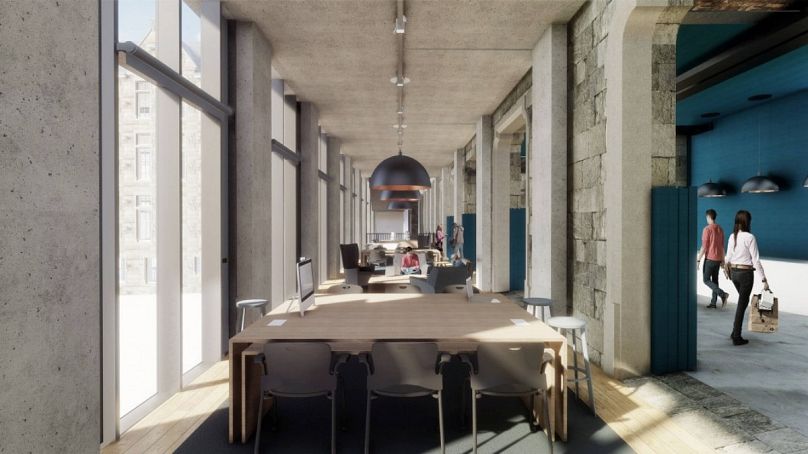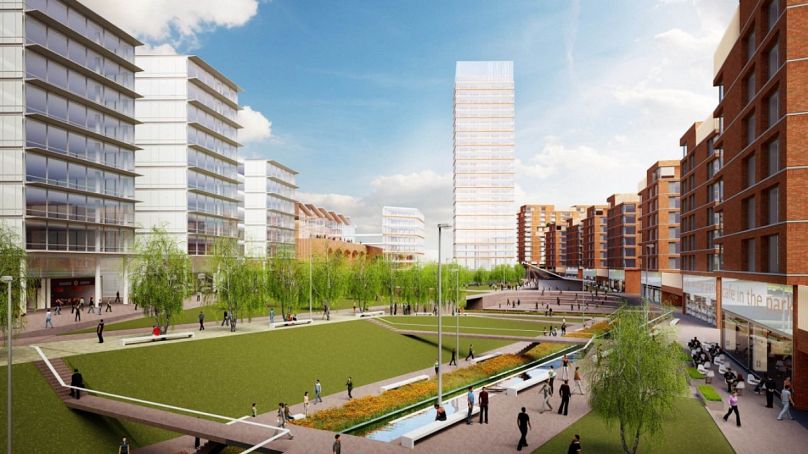Our interview with architect Peter Fisher of Bennetts Associates on the combination of beauty, sustainability and technology.
Peter Fisher is a director of Bennetts Associates. Bennetts Associates was formed in 1987 by Denise and Rab Bennetts - who worked for Ove Arup. They architecture firm has built Amsterdam's Mint Hotel and the Royal Shakespeare Theatre in Stratford upon Avon. Green building is part of their DNA and they have a new eco building opening at Cambridge University. Here Fisher tells us about their ideas.
Tell us why you want to build in a sustainable way?
“Sustainability, has been at the core of our work since the firm was founded over 30 years ago. Rab often refers to the impact that EF Schumacher’s book ‘Small is Beautiful’ had on him as a student. Its thesis being that technology isn’t always the answer and needs to be used appropriately. Many of the problems with our buildings today stem from over-complexity. We believe passionately that people should live, work and play in beautiful buildings that are healthy and comfortable.”
Is being green important to you?
“In short: 'yes'! We are founders of the UK Green Building Council and recently became the first architects in the world to adapt approved Science Based Targets. The built environment is one of the major contributors to greenhouse gas emissions.”
Can green architecture also give us good design?
“Sustainable architecture is often associated with additional technology, such as photovoltaic panels. While these undoubtedly have a place, the greenest buildings are those that people find comfortable. We use energy to compensate for discomfort by turning on heating, cooling, lighting, etc. Therefore when architecture is ground in human need and comfort, it not only results in more pleasant buildings, but also ones that use less energy.”
How do beauty and greenness, and technology combine for you?
“Many of the qualities that we associate with beautiful buildings are actually those that make building much more habitable. Tall windows allow daylight to penetrate, tall ceilings help allow the stratification of air, a view of nature helps to filter air. In many of our projects the concrete structure is holistically integrated so that it not only holds up the building, but provides thermal mass to help provide natural cooling, is shaped to dissipate noise and used to reflect light.”
Which architects do you rate who also share your green concerns?
“The Austrian firm Baumschlager Eberle has built its own office, which is able to maintain a comfortable internal environment without having any heating, cooling or ventilation systems installed. Everything is done passively. Using only the form of the building. Mechanical systems in buildings can be as much as 30% of the total cost. So to not need those meant the building was cheaper than business as usual.”
You have some academic buildings opening soon, right?
“We are finishing, amongst other things, buildings for The Royal College of Pathologists and the University of Cambridge. Both of these use a concrete structure to provide thermal mass. Both have windows that carefully balance the need for daylight, while providing sufficient shading from the peak sun. The RCP in Central London uses a low-energy ventilation system, while Cambridge is naturally ventilated. But both are rooted in our experience of making buildings that are comfortable and delightful for people to occupy. In both we have looked at the lifecycle energy costs of the building, covering construction and operation. Given that much of the energy used in a building’s lifetime is its construction, both are made of enduring materials that will enable the buildings to be adapted over time.”
You use the wood product Cross Laminated Timber in your designs too, don't you?
“We have also just completed the largest CLT roof in the UK at our project for Jaguar Land Rover, a major new research and development facility for the company in Gaydon.”
Tell us what are the big challenges in architecture for the future you are trying to solve?
“A huge challenge is what we do with our existing building stock, given we only replace about 1-2% of buildings per year. How do we make for example Victorian houses perform much better? In turn that means that new buildings need to become carbon positive – where they produce and sequester more energy than they consume. We are exploring the limits of what we can do at the moment. Can we produce buildings that simply don’t need to consume energy for heating, cooling and ventilation? And which can produce more energy than is needed for lighting and appliances. We are very close to being able to do in building that cost no more than normal buildings.”
Words: Christopher Beanland
Header: 11-21 Canal Reach, King's Cross Central, London, 2015. Source: Bennetts Associates













